It can be challenging to stand out as a candidate in the tech world. With so many applicants for each job posting, setting yourself apart from the pack is essential. A programmer’s resume is one helpful tool; however, the standard format might not be enough. After all, it would help if you showed hiring managers that you’re more than an entry-level applicant and can tackle their job quickly and confidently. To land your dream software developer job in today’s competitive market, you must give your resume and application everything you’ve. The best way to do that is by customizing and personalizing your resume to stand out from other applicants. For this reason, we have prepared a programmer resume example with tips on how you can do the same for your document.
Programmer Resume Example

Download This Programmer Resume as PDF
Web Developer Resume Example
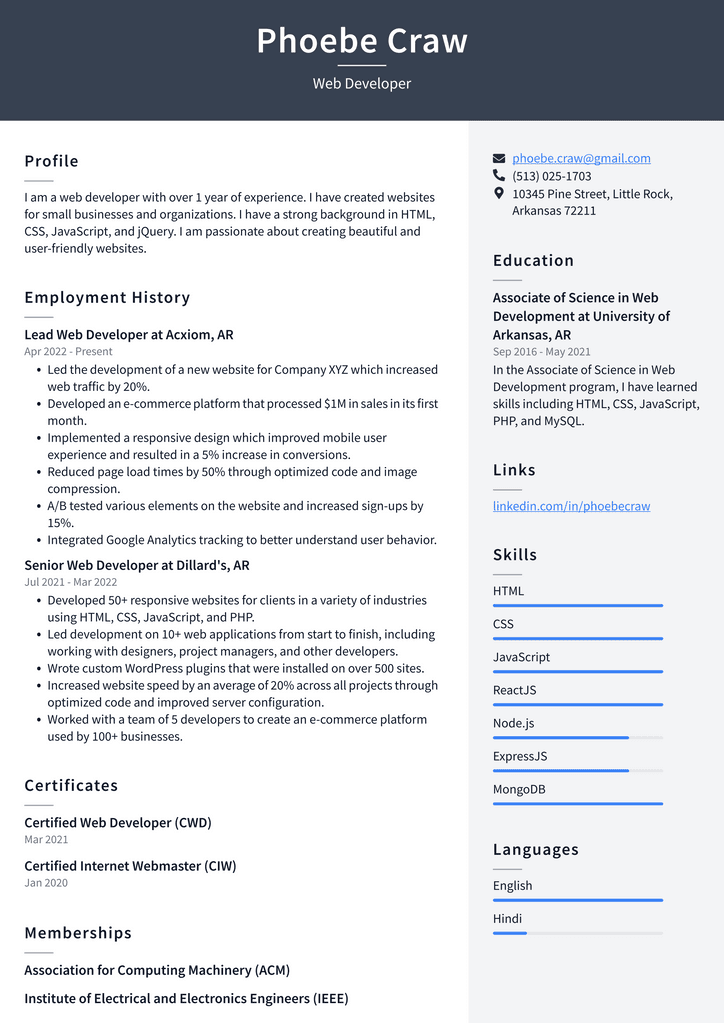
Download This Web Developer Resume as PDF
Mobile App Developer Resume Example
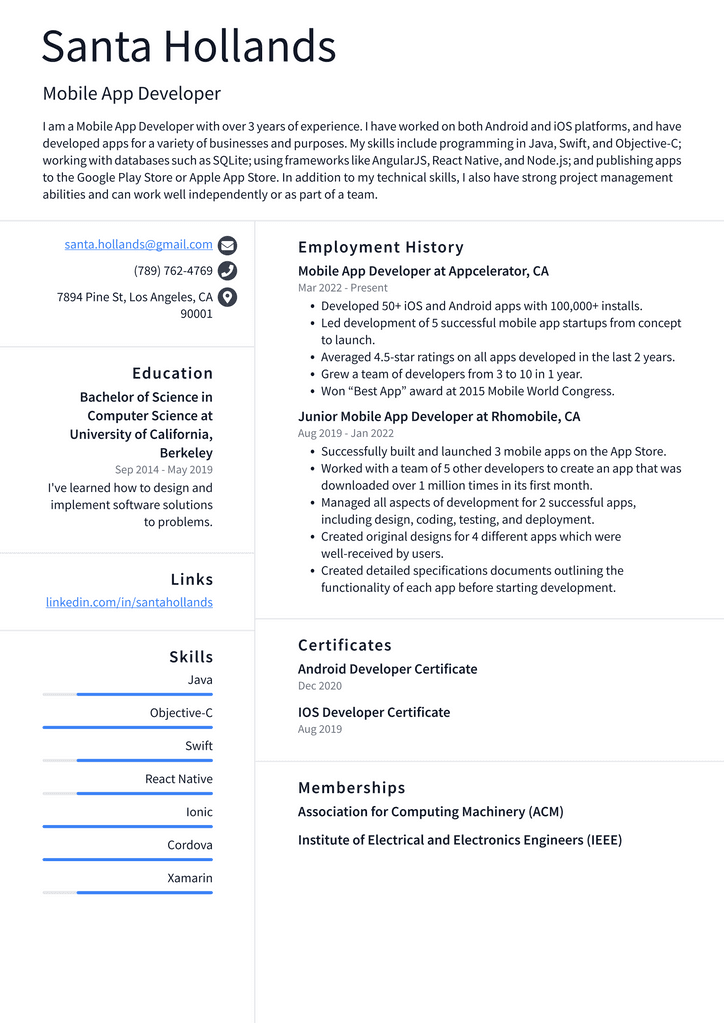
Download This Mobile App Developer Resume as PDF
Database Administrator Resume Example

Download This Database Administrator Resume as PDF
Software Developer Resume Example
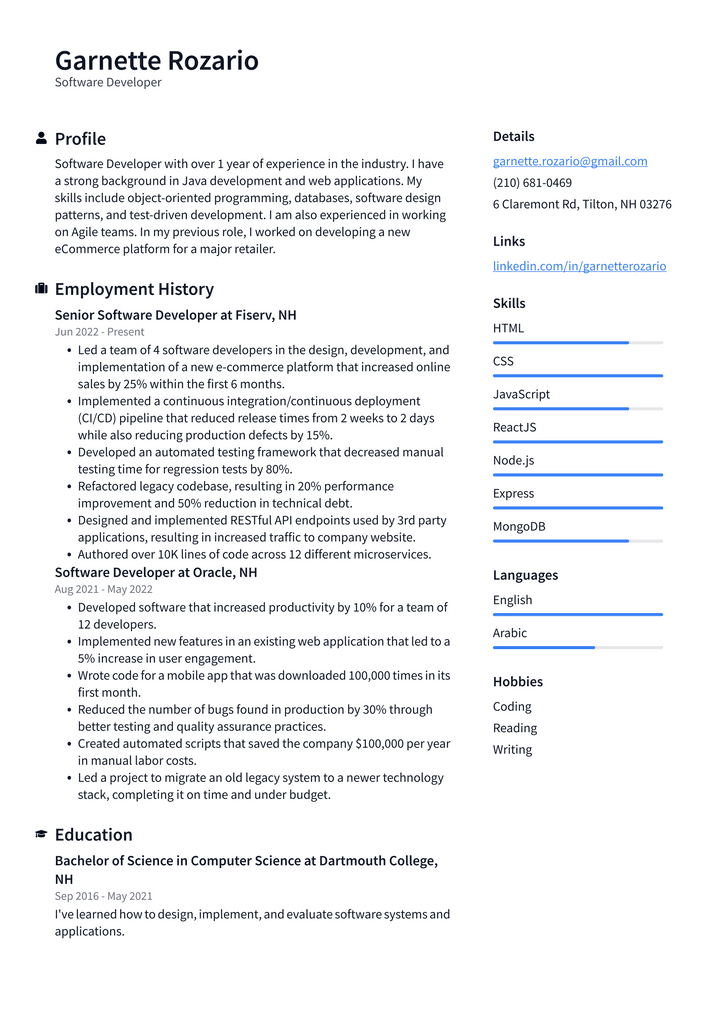
Download This Software Developer Resume as PDF
Systems Analyst Resume Example
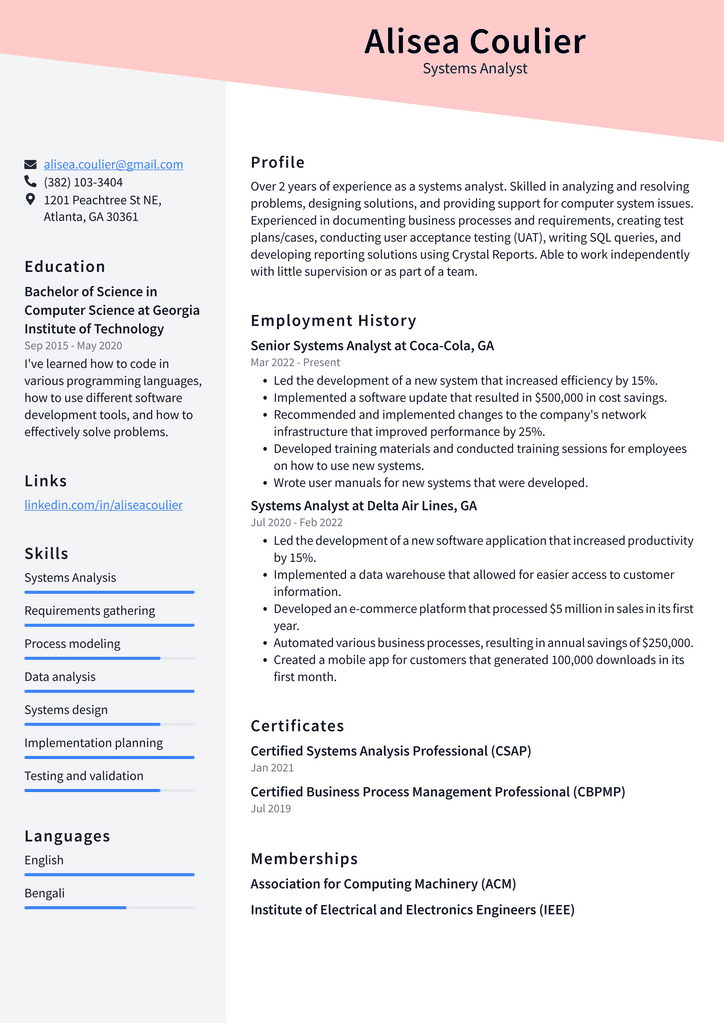
Download This Systems Analyst Resume as PDF
Computer Systems Engineer Resume Example
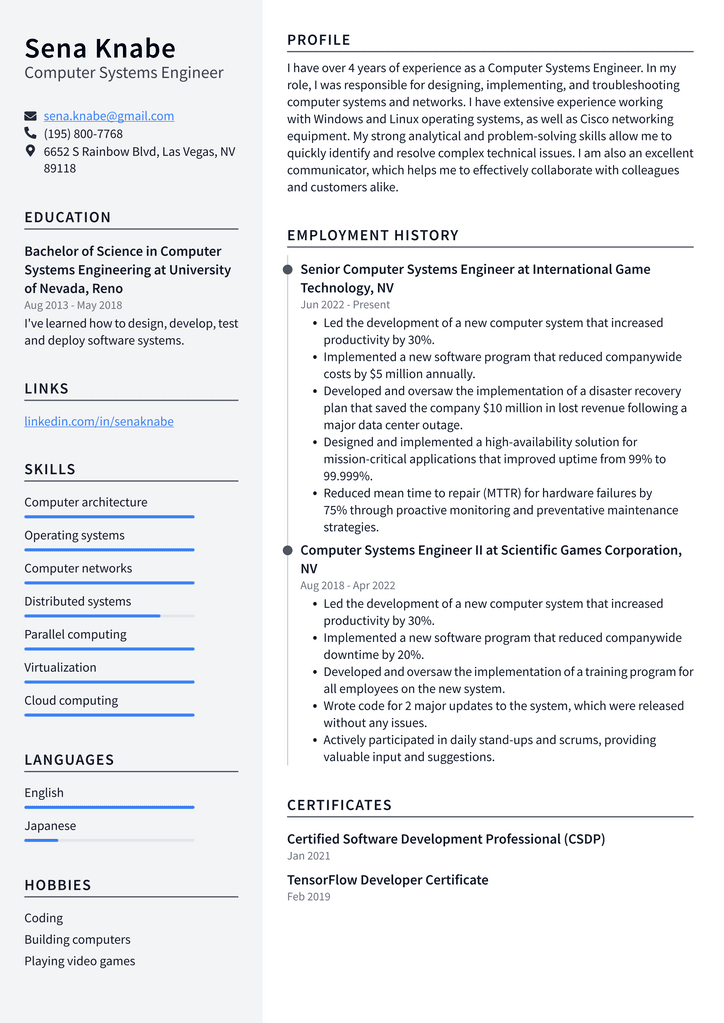
Download This Computer Systems Engineer Resume as PDF
What is a programmer’s resume?
A programmer’s resume is a document that highlights the skills, experience, and qualifications you have that make you a great candidate for a specific job. Resumes are often the first glimpse a hiring manager has into your skills, so you must make a great first impression with your resume. Programmer resumes are essential for tech job seekers because the skills and knowledge required are often very specialized and specific. Resumes for programmer jobs should include information about the technologies and programming languages a candidate is familiar with. In addition, because these positions usually require individuals to have a wide range of skills, programmer resumes should highlight other qualifications, such as degrees, relevant internships, and experience.
Why is a customized resume important?
An eye-catching resume will get hiring managers’ attention. However, a generic, one-size-fits-all resume will not show that you are the right candidate for the job. Instead, it will show that you are the same as many other applicants who do not stand out from the crowd. Therefore, it is essential to include specific information about the position you’re applying for and your qualifications. In addition, a generic resume will only get you so far, so you must customize it for each job you apply to. When writing a programmer’s resume, it is also essential to take your time. You need to be thoughtful and make sure that you customize each resume for the job you’re applying for. Otherwise, it will be evident that you’ve copy-and-pasted the same generic resume for each job you apply to.
A brief overview of your skills and experience
Every programmer’s resume should start with an overview of their skills and experience. However, each one should be tailored to the specific position you’re applying for. For example, you might have experience with a particular software language, but that doesn’t mean you’re qualified to apply for every job requiring that skill. To show that you’re eligible to apply for a specific position, you should also include information about the companies or organizations with which you’ve had experience. This lets hiring managers know that you’ve experienced and reliable. It is also important to include how long you’ve had these skills and what projects you used them for. For example, if you’re applying for a software developer job, let the hiring manager know that you’ve been coding for at least two years. You can do this by listing specific projects and accomplishments where you demonstrated these skills.
Show your passion and why you want to be a programmer.
This is another crucial aspect of your programmer’s resume. It’s important to show hiring managers that you want this job and is passionate about it. After all, you don’t want to apply for a job you don’t want to do. Therefore, it’s essential to let hiring managers know you’re interested in the position and why. Begin your programmer’s resume with a short paragraph that describes why you want to work in this field. This will help hire managers understand why you’re applying for the job and what you hope to accomplish as a software developer. It also allows you to showcase your knowledge and skills in this field. It is also important to include how you discovered your passion for programming. Let hiring managers know how long you’ve been interested in this field and how you found and developed your love for programming.
Demonstrate your coding skills
This is the most crucial aspect of your programmer’s resume. You want to show hiring managers that you’re qualified for the job and that you can code with ease. This is where your portfolio and samples come in. You can include these in your programmer’s resume. If you don’t have any examples or a portfolio yet, don’t worry. You can still fit this section of your resume and explain that you don’t have any samples yet because you’re still building a portfolio. If you have samples or a portfolio, include them in your programmer resume, and make sure they’re relevant to the position you’re applying for. Highlight your best projects and explain how they demonstrate your skills as a coder.
Summing up
This concludes our programmer resume example and guide. We hope you’ve gained a new appreciation for the importance of a customized resume. Remember that your resume is your first opportunity to make a great impression on hiring managers, so it’s vital that you make it count. A generic resume will only get you so far, so you must customize it for each job you apply to. When writing a programmer’s resume, it is also essential to take your time. You need to be thoughtful and make sure that you customize each resume for the job you’re applying for. Otherwise, it will be evident that you’ve copied and pasted the same generic resume for each job you apply to.